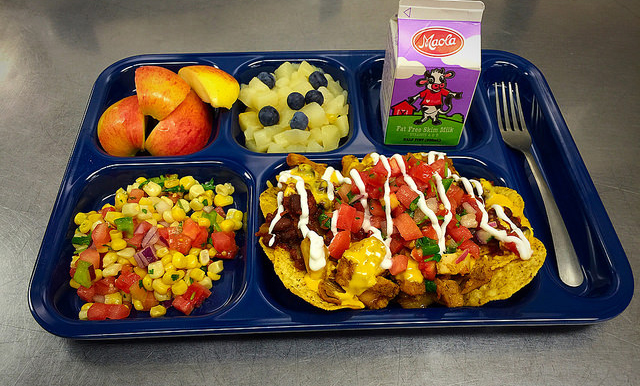
August 25, 2025 - SACRAMENTO – As parents send their children back to classrooms for the new school year, Governor Newsom today shared ten ways California’s nation-leading investments are supporting kids and reducing costs for families:
- 🥪Universal Meals Program for School Kids: Every student gets TWO free meals. California was the first state to implement a statewide Universal Meals Program for schoolchildren, providing all public TK-12 students access to two free meals per school day. In September, Governor Newsom signed legislation to increase enrollment in state food assistance programs, reduce youth consumption of processed foods, and increase access to healthy, locally grown food in all California communities. California also participates in the federal SUN Bucks food program which ensures that children in families with low incomes have adequate nutrition while school is out for the summer.
- 🍎Farm to School: Free school meals are becoming MORE nutritious. First Partner Jennifer Siebel Newsom championed efforts to develop the innovative California Farm to School initiative. California Farm to School works in tandem with universal school meals to ensure California students have access to two free school meals that are locally-sourced, delicious, and nutritious.
- 👧Universal Transitional Kindergarten (TK): A year of FREE learning for pre-school-aged kids. Beginning this school year, universal TK will be fully implemented, and all four-year olds will be eligible — fulfilling a core promise made by Governor Newsom when he took office. Universal TK provides a strong foundation for literacy for all students. This program will provide access to pre-kindergarten to more than 300,000 additional four-year-olds (compared to the 2021-22 school year).
- 🏫Before School, After School, and Summer School: FREE for kids, reducing childcare costs for families. The Governor’s budget provides before, after, and summer school instruction and enrichment for students in grades TK-6, including high-impact tutoring. This is critical for working families and student success.
- 💵Savings accounts for students: FREE money for college and careers. All families of low-income public school students – 3.4 million across the state – can now access college savings accounts created in their children’s names, with seed investments of between $100 and $1,500. The CalKIDS program invests $1.9 billion into accounts for low-income school-age children in grades 1-12 and for newborn children born on or after July 1, 2022.
- 📚Literacy Coaches: FREE reading help for kids who need it. The Governor has invested a total of $500 million for Literacy Coaches in the 2022 and 2023 Budget Acts, funding 818 of the state’s highest needs schools to hire and train literacy coaches and reading specialists. The most recent budget included an additional $215 million for TK-12 Literacy Coaching.
- 📓Screener for Reading Difficulties: FREE reading support for ALL young learners. Beginning this school year, California’s 1.2 million kindergarten, first, and second-grade students will be annually screened for reading difficulties, including dyslexia.
- 📝Literacy Roadmap: MORE support to help kids read. As part of the Golden State Literacy Plan, this year, elementary grades educators will now have literacy blocks to guide instruction with evidence-based strategies to support comprehensive literacy instruction.
- 👨🏫Teacher Recruitment and Retention: BETTER support and stronger teachers. Well-prepared educators are essential to delivering high quality literacy instruction, and the state has invested more than $4 billion in recent years to recruit and retain quality educators.
- 💪Learning Recovery Emergency Block Grant: Targeted resources to help students RECOVER from learning loss. The Governor has allocated a total of $7.2 billion for the Learning Recovery Emergency Block Grant (LREBG) to support Local Educational Agencies (LEA) in addressing the academic and emotional impacts of the pandemic, including low ELA test scores.
✨BONUS! California has the nation’s largest effort to break down barriers that make it harder for students to succeed. Community schools bring together schools, counties, and nonprofits to provide health care, mental health, and social services alongside quality teaching. They also focus on involving families and the community in student success. The state is funding nearly 2,500 community schools, serving some of California’s highest-need areas, to give students the support they need to thrive in school and in life.
Source: Office of the Governor



